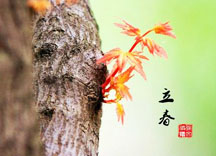2016年伊朗医科大学癌症治疗部门有关以蜂王浆治疗因癌症引起的疲劳 CRF的研究报告
发布时间:17-06-09 14:25
Background
Cancer-related fatigue (CRF) is experienced by 50% to 90% of cancer patients and can severely affect their quality of life and functional capacity. Several randomized trials have recommended various ways to alleviate the symptoms of CRF with or without recourse to medications.
Objective
The aim of this study is to evaluate the effectiveness of processed honey and royal jelly on the symptoms of CRF in cancer patients who are undergoing hormone therapy, chemotherapy, chemo-radiation, or radiotherapy.
Methods
Fifty-two participants from the patients who visited the oncology clinic of Shohada-e-Tajrish hospital in Tehran (Iran) between May 2013 and August 2014 were selected and divided into two groups. The study group (26 patients) received processed honey and royal jelly, while the control group received pure honey. Both groups were instructed to consume their 5mL supplement twice daily for 4 weeks. Both groups were assessed at the beginning of the study, after 2 weeks, and then at the end of 4 weeks of treatment. Fatigue was measured using a visual analogue fatigue scale (VAFS) and fatigue severity scale (FSS). The results were compared between the two arms of study, and equality of probability distributions was assessed using a Kolmogorov–Smirnov test.
Results
The mean age of the 52 patients was 54.84. After two and four weeks of treatment with processed honey and royal jelly, VAFS and FSS due to treatment was better in the study group than in the control group, and the differences were statistically significant (p<0.001, p<0.001, respectively).
Conclusion
To the best of our knowledge, our study provided support for the use of processed honey and royal jelly to ameliorate CRF. The positive results of this study warrant further studies in this field.
Clinical Trial Registration
The study was registered in the Iranian Clinical Trial Registry Center (http://www.irct.ir) with the registration code: IRCT2015081423426N1.
Funding
The authors received no financial support for the research, authorship, and/or publication of this article.
Keywords: Fatigue, Cancer, Royal jelly
Go to:
1. Introduction
Cancer-related fatigue (CRF) is a common and treatable symptom, reported in 50%–90% of patients. It can severely affect numerous aspects of the cancer patient’s quality of life and functional capacity (1, 2). Many cancer patients complain of fatigue as one of the most challenging problems related to cancer (3). Early diagnosis and management of this stressful symptom is of great importance; it is often unreported and consequently does not receive adequate treatment (3). As a result, many patients report that CRF has had profound emotional, mental, physical, and social effects on the quality of their lives. CRF is rarely an isolated symptom and most commonly occurs with other symptoms such as pain, distress, anemia, and sleep disturbances, and it should be diagnosed only after ruling out all other reasons for fatigue, such as treatment complications and especially cancer progression as well as treatable conditions such as hypothyroidism, anemia, and depression (4–6). As patients often experience multiple symptoms that may vary according to diagnosis, treatment, and stage of disease, and because of the significant effects of psychosocial and cultural differences on expressing symptoms by different individuals, exact prevalence of CRF among cancer patients is difficult to determine. However, based on various studies, it is estimated that 60%–96% of cancer patients in treatment experience fatigue, including 60%–93% of those on radiotherapy and 80%–96% of those on chemotherapy (including immune-modulators such as interleukin and interferon) (5–12). For many cancer survivors, fatigue can persist for 5 to 10 years after treatment (2, 3). The pathophysiology of CRF has not been adequately elucidated. Anemia, depression, anxiety, immobility, chemotherapy, radiation therapy, and the cancer itself have been shown to contribute to CRF (13). Management of CRF should start with determination of the causative mechanisms of fatigue in oncology patients and addressing the treatable issues such as hypothyroidism, anemia, and depression. Due to the absence of a clear etiology for CRF, combined treatment to reduce symptoms of physical and mental fatigue for cognitive impairment patients should be used (14). It must be mentioned that the treatment should be initiated early to prevent CRF from turning into a chronic problem. Several randomized trials have recommended various ways to alleviate the symptoms of CRF with or without recourse to medications. Nonpharmacological methods usually include psychosocial interventions (such as cognitive behavioral therapeutic approaches) and physical exercise. Several pharmacologic interventions (mainly psychiatric medications) have been recommended for treating CRF; however, there is still no robust data to support the routine use of such medications for this disorder (12–14). Several other studies have evaluated the effects of various food supplements and herbal medication on CRF. Royal jelly is a honey bee secretion that is used in the nutrition of larvae as well as adult queens. The overall material is composed of water (67%), crude protein (including small amounts of many different amino acids), monosaccharides, and a relatively high amount of fatty acids. It also contains many trace minerals, some enzymes and antibacterial and antibiotic components but is void of fat-soluble vitamins, A, D, E and K. Several studies so far have shown antioxidant (15–18), immune-modulatory (19–22), and anti-tumoral and anti-inflammatory (23–25) characteristics of the royal jelly. In this randomized double-blind placebo-controlled clinical trial, we have assessed the effects of processed honey and royal jelly on the symptoms of CRF.
Go to:
2. Material and methods
2.1. Trial design
Processed honey and royal jelly are made under standard-state conditions with the permission of the Food and Drug Organization of Ministry of Health and Medical Education of Iran. Several unpublished data from dissertations or phase I or II trials with a small number of cases have shown its effectiveness in ameliorating the symptoms of CRF. We conducted this single-center double-blind randomized study after obtaining approval from our local ethics board and after receiving registry codes from the Iranian Registry of Clinical Trials (Registration code: IRCT2015081423426N1). Enrollment of subjects took place between May 2013 and August 2014 at Shohada-e-Tajrish Hospital in Tehran (Iran). In total, 52 patients were randomized into two groups: 26 participants to the drug group and 26 participants to the placebo group. Demographic data (age and gender), type of malignancy, and its stage (based on TNM staging), type, and duration of treatment were recorded for each participant. Quality of life (performance status) was measured using The Eastern Cooperative Oncology Group (ECOG) score. Fatigue was measured using a visual analogue fatigue scale (VAFS) and fatigue severity scale, which is described elsewhere. The primary outcome resulted in changes in the fatigue severity scales and VAFS.
2.2. Participants
Inclusion criteria were as follows: age more than 18, having the diagnosis of a solid (nonhematologic) malignancy, visual analogue scale (VAS) more than 4, Karnofsky performance status (KPS) more than 70, serum hemoglobin level of more than 8g/dL with no abrupt decrease (more than 2g/dl) during the last month, liver enzymes not more than three times above the normal limits, serum total bilirubin less than 2mg/dL, serum creatinine less than 2mg/dL, and creatinine clearance more than 60ml/mi. Having one of these conditions, patients who had started chemotherapy between 6 weeks to 6 months before the start of the study and were supposed to continue chemotherapy for at least 3 more weeks; patients who had started hormone therapy at least 3 months before the start of the study and were supposed to continue the treatment throughout the study period; patients under radiation therapy who were complaining of fatigue; patients whose treatment had ended but still were complaining of fatigue; patients with hypersensitivity to honey, uncontrolled cardiac or respiratory problems, any other serious medical condition, including severe infection or uncontrolled pain, pregnancy, major depression, taking medications with potential effects on fatigue, such as psychiatric medication (anti-depressants, psychostimulants, etc.) or growth factors such as erythropoietin, were excluded from the study.
2.3. Interventions
Processed honey and royal jelly are homogeneous substances with the consistency of a fairly fluid paste. They are yellowish in color with brown tinges, have a slightly sour flavor, and are partially soluble in water. Analysis of the characteristics and composition of processed honey and royal jelly was done in Kimiafaam (http://en.kimiafaam.com/bee.php), which is the reference laboratory of the ministry of health. The final product was controlled based on the amount of 10-hydroxydecanoic acids by high-performance liquid chromatography (HPLC) method at two reference laboratories: Kimia-Novin-Azma and Pharmacognosy departments of Tehran University of Medical Sciences. The physicochemical characteristics of processed honey and royal jelly are shown in Table 1. The study group (26 patients) received processed honey and royal jelly, while the control group received pure honey (without royal jelly). Both groups were instructed to consume their supplement of 5mL twice daily for 4 weeks. Both groups were assessed at the beginning of study, after 2 weeks, and then at the end of 4 weeks of treatment.
Table 1
Table 1
Composition of Processed Honey and Royal Jelly
2.4. Outcome
All patients were evaluated before treatment, on the second week, fourth week, and after intervention. During each visit, fatigue was measured using a VAFS and fatigue severity scale. The primary outcome resulted in changes in the fatigue severity scale and VAFS.
2.5. Sampling
This study was performed on 52 patients with histologically proven breast cancer, stomach cancer, esophagus cancer, colon cancer, rectal cancer or prostate cancer, who were treated with hormone therapy, chemotherapy, chemo-radiation, or radiotherapy and able to declare their severity of fatigue and were included in the study. These patients took either processed honey and royal jelly (study group) or pure honey (placebo group) after considering the inclusion and exclusion criteria.
2.6. Randomization
Fifty-two patients were randomized into two groups, and randomization was accomplished by computer using dynamic allocation with an established algorithm that balances the marginal distribution. The patients were allocated randomly into the two groups: 26 participants to processed honey and royal jelly and 26 participants to pure honey group of the same shape. After treatment and randomization, the patients received either processed honey and royal jelly (study group) or pure honey (control group) of the same shape. The patients and physicians were not aware of the kind of medications that had been selected for them.
2.7. Blinding
This was a double-blinded study because the kind of medications used for the patients and physicians was blinded to the allotted treatment, and the analysis was based on the treatment received. We tried to diminish the bias by blinding the patients, staff, and physicians of the clinical outcomes data to the type of treatment that was used for each group.
2.8. Statistical methods
Both groups were assessed at the beginning of the study, after 2 weeks, and then at the end of 4 weeks of treatment. At each visit, fatigue was measured using a visual analogue fatigue scale (VAFS) and fatigue severity scale. Changes in the VAFS and fatigue severity scales between baseline and each follow-up visit were documented. The results were compared between the two arms of study, those with processed honey and royal jelly and those with pure honey. Equality of probability distributions was assessed using the Kolmogorov–Smirnov test. Wilcoxon and McNemar’s statistical tests were used to analyze the data.
2.9. Research ethics
All 52 patients signed informed consent. The ethical regulations dictated in the act provided by the research center of Shohada-e-Tajrish Hospital in Shahid Beheshti University of Medical Sciences (reference number of research ethics committee: M/269) were strictly observed. The data are preserved regardless of the patient’s names.
Go to:
3. Results
The study included 52 patients (21 males [40.4%] and 31 females [59.6%}). In the study group, nine patients (34.6%) were male and 17 patients (65.4%) were female. In the control group, 12 patients (46.2%) were male and 14 patients (53.8%) were female. The mean age of total patients was 54.84 years, and the mean age of study and control groups were 55.42 and 54.27 years, respectively. The study group included 14 patients (53.8%), and the control group included 13 patients (50%) that had breast cancer. Two patients (7.7%) in the study group and no patients (0%) in the control group had stomach cancer. In the study group, three patients (11.5%) and in the control group one patient (3.8%) had esophagus cancer. In the study group, no patients (0%) and in the control group three patients (11.5%) had colon cancer. One patient (3.8%) in the study group and no patients (0%) in the control group had rectal cancer. Six patients (23.1%) in the study group and nine patients (34.6%) in the control group were affected by prostate cancer. In the study group, 12 patients (46.2%) and in the control group 14 patients (53.8%) received hormonal therapy. Two patients (7.7%) in the study group and four patients (15.4%) in the control group were treated with chemotherapy. In the study group, five patients (19.2%) and in the control group one patient (3.8%) received chemo-radiation. Seven patients (26.9%) in the study group and seven patients (26.9%) in the control group were treated with radiotherapy. There was no statistically significant difference between the two groups in terms of mean age, type of cancer, and type of treatment. The patient and treatment characteristics are summarized in Table 2. There were not any differences between the study and control groups before treatment as FSS, ECOG PS, and VPSS (p=0.541, p=1, p=1, respectively). After two weeks of treatment, the mean FSS was 5.31 with SD of 1.258 in the study group, and it was 7.46 with SD of 1.067 in control group with statistically significant difference (p<0.001). This difference was more prominent after the fourth week of intervention (p<0.001). After 2 weeks of treatment, the mean ECOG PS was 3.69 with SD of 0.884 in study group, and it was 5.5 with SD of 0.906 in control group with statistically significant difference (p<0.001). After 4 weeks, ECOG PS due to treatment was better in the case group compared with that of the control group with statistically significant difference (p<0.001). After 2 weeks, the mean VPSS was 1.69 with SD of 0.618 in patients were treated with honey and royal jelly, and it was 2.46 with SD of 0.508 in patients treated with pure honey with statistically significant difference (p<0.001). This difference was more prominent after the fourth week of intervention (p<0.001). Comparing the basal fatigue severity scale with the scales measured at 2 and 4 weeks after the intervention showed that the participants in the study group did have lower fatigue scores, and this difference was more prominent after the fourth week of intervention (Table 3).
Table 2
Table 2
Patient and Treatment Characteristics of the Patients in the Two Groups
Table 3
Table 3
Comparison of the Fatigue and Performance Status at the Beginning (Base) After the Second and Fourth Weeks of Study











 京公网安备 11010502049479号
京公网安备 11010502049479号







